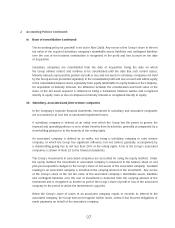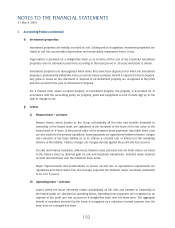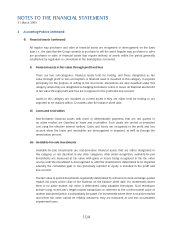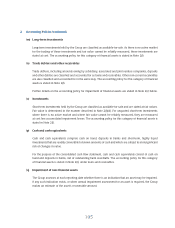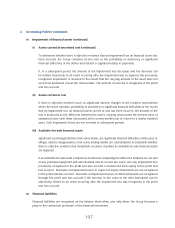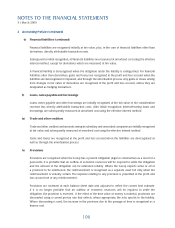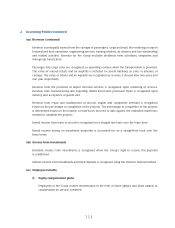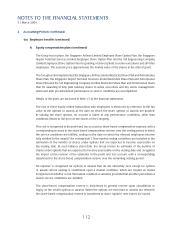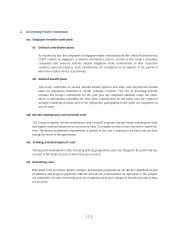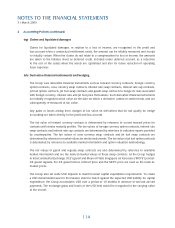Singapore Airlines 2009 Annual Report Download - page 106
Download and view the complete annual report
Please find page 106 of the 2009 Singapore Airlines annual report below. You can navigate through the pages in the report by either clicking on the pages listed below, or by using the keyword search tool below to find specific information within the annual report.104
NOTES TO THE FINANCIAL STATEMENTS
31 March 2009
2 Accounting Policies (continued)
(l) Financial assets (continued)
All regular way purchases and sales of fi nancial assets are recognised or derecognised on the trade
date, i.e., the date that the Group commits to purchase or sell the asset. Regular way purchases or sales
are purchases or sales of fi nancial assets that require delivery of assets within the period generally
established by regulation or convention in the marketplace concerned.
(i) Financial assets at fair value through profi t and loss
There are two sub-categories: fi nancial assets held for trading, and those designated as fair
value through profi t or loss at inception. A fi nancial asset is classifi ed in this category if acquired
principally for the purpose of selling in the short term. Derivatives are also classifi ed under this
category unless they are designated as hedging derivatives. Gains or losses on fi nancial assets held
at fair value through profi t and loss are recognised in the profi t and loss account.
Assets in this category are classifi ed as current assets if they are either held for trading or are
expected to be realised within 12 months after the balance sheet date.
(ii) Loans and receivables
Non-derivative fi nancial assets with fi xed or determinable payments that are not quoted in
an active market are classifi ed as loans and receivables. Such assets are carried at amortised
cost using the effective interest method. Gains and losses are recognised in the profi t and loss
account when the loans and receivables are derecognised or impaired, as well as through the
amortisation process.
(iii) Available-for-sale investments
Available-for-sale investments are non-derivative fi nancial assets that are either designated in
this category, or not classifi ed in any other categories. After initial recognition, available-for-sale
investments are measured at fair value with gains or losses being recognised in the fair value
reserve until the investment is derecognised or until the investment is determined to be impaired
whereby the cumulative gain or loss previously reported in equity is included in the profi t and
loss account.
The fair value of quoted investments is generally determined by reference to stock exchange quoted
market bid prices at the close of the business on the balance sheet date. For investments where
there is no active market, fair value is determined using valuation techniques. Such techniques
include using recent arm’s length market transactions or reference to the current market value of
another instrument (which is substantially the same). For investments where there is no active market
and where fair value cannot be reliably measured, they are measured at cost less accumulated
impairment losses.





